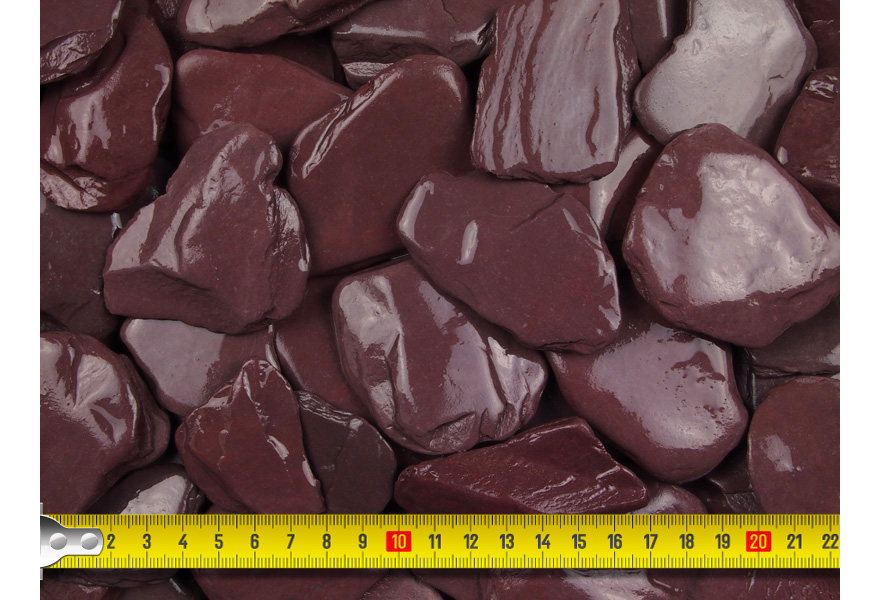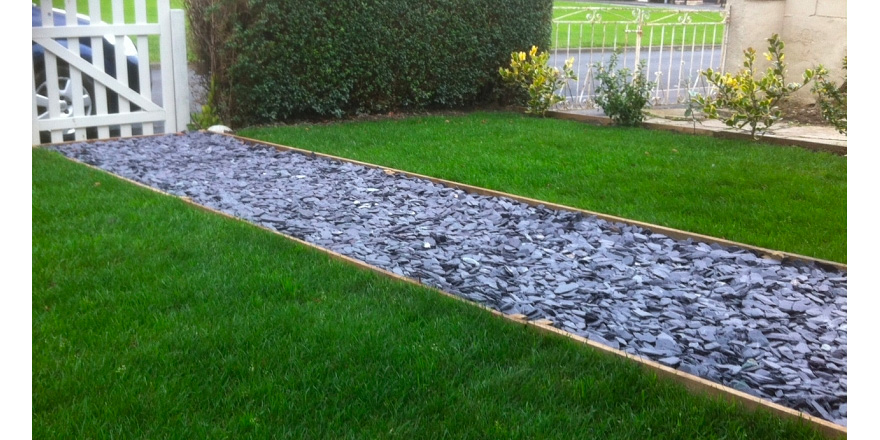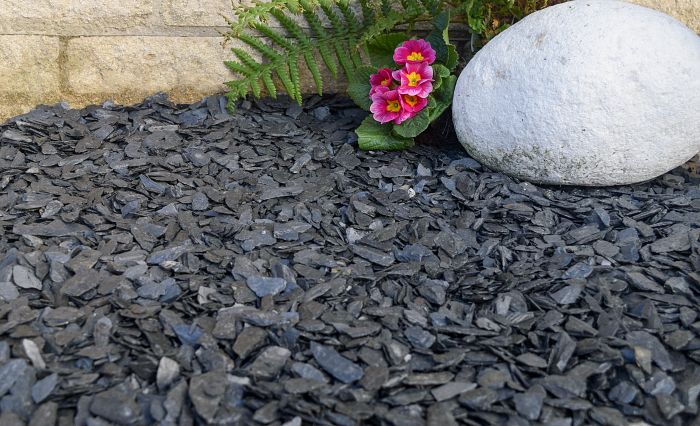The Ultimate Guide To Slate Chippings

Slate chippings are hugely versatile and the ideal material for everything from paths, borders right through to water feature edging and stunning rockeries.
Slate has never been more popular, so here at Decorative Aggregates, we've put together everything you need to know about slate chippings.
Slate chipping uses
The colourful shades and varied size of slate chippings make them a very common choice for outdoor improvements.

What are slate chippings used for?
- Garden paths
- Rockeries
- Water feature edging
- Mulch
- Ground cover
- Pond edging
- Borders
- Planting areas
- Patio gap fillers

What are the benefits of slate chippings?
- Low maintenance - there is no need for trimming, watering or cutting. Slate chippings also help prevent weed growth.
- Versatile – this diverse product can be used for paths, driveways, edging, water features, rockeries and much more. There's also a wide variety of colours, textures and shapes available, allowing for broad innovation.
- Easy to lay – slate chippings are a popular choice over tarmac, concrete and paving as they're much simpler to lay.
- Environmentally-friendly – slate chippings are a recycled material and more eco-friendly than other quarried stones.
- Reduce weed germination - a weed membrane can easily be laid beneath slate to block weeds emerging.
- Perfect for mulch - slate is the ideal material for retaining moisture and cooling soil, helping plants to survive hot weather.
- Durable – slate is hard wearing and rarely affected by adverse weather.
- Looks fantastic wet and dry – slate still looks great rain or shine, becoming a wonderful darker shade when wet.
How to lay a slate chipping path
We've put together a handy guide to laying a slate chipping path.
1) Planning your slate chipping project
Slate chippings are adaptable and have many uses for outdoor landscaping.
Ask yourself where the slate chippings need to begin and finish, how wide they need to stretch and ultimately find the total size of the area they need to cover.
The depth of slate chippings depends on the size of slate chippings and what it's used for.
For example, standard 20mm slate chippings generally should be approximately 4-5cm deep. Larger aggregates such as paddlestones are best laid 6cm deep.

2) Calculating the correct quantity of slate chippings
We are frequently asked ‘how much slate do I need?'. We've put together a handy slate calculator to do the maths for you. Simply enter a few details and our calculator will tell you an approximate volume of slate needed.
If you have any questions, feel free to call us for advice on 01629 630256.
3) Preparing the area
Mark out where your slate chippings need to be laid using something like string or rope.
Dig out the area to approximately 4 inches deep. Then, rake the base of the area and compact it using a flattening tool.
At this point you may wish to add a border, keeping the slate neatly contained. For this, you can metal, bricks, wood or stone.

4) What to put under slate chippings
Now you have a trench, this needs to be lined with 10cm of crushed stone to create a sturdy surface. Ensure this is compacted with a sledge hammer or place compactor (these can often be hired from a hardware store).
In order to prevent weeds sprouting through your slate, add a weed resistant membrane on top of your stones before you lay your slate. This can be placed on and cut to the shape of your slate area. This can sometimes be an awkward shape, if that's the case, simply overlap cuts of the membrane so there are no gaps.
5) Laying the slate chippings
Your slate chippings can now be shovelled on top of the weed resistant membrane. Make sure you lay a depth of at least 4-5cm and distribute it evenly with a rake.
How to clean slate chippings
The best way to clean slate chippings is to create a large sieve and hose down the chippings.
- Drill holes into the base of an old wheelbarrow (or a similar item).
- Fill the wheelbarrow with the slate chippings and power wash the dirty slate chippings.
- The water should drain out and you can lay (or re-lay) the slate chippings.

Maintaining slate chippings
Although slate chipping is low maintenance, there are a few simple ways to ensure your slate chipping areas last for years and years.
- Keep an eye on any sparse spots of aggregate. They're often unavoidable, but it's a good idea to have some spare in the same colour and size so you can top up.
- Ensure the area is weeded fully before you lay your slate chippings.
- Rake the slate chippings on a regular basis to keep the area even.
Choosing your slate chippings
Here at Decorative Aggregates, we stock a wide variety of different slate chippings in a range of colours and sizes.
 They're available in four stunning colours, choose from blue, plum, green or graphite grey slate chippings.
They're available in four stunning colours, choose from blue, plum, green or graphite grey slate chippings.
- 40mm slate chippings are chunkier and therefore ideal for ground cover, mulching, around ponds and to complement water features. For example, the 40mm Graphite Grey Slate.
- 20mm slate chippings are flatter than 40mm, making them easier to walk on and a fantastic aggregate for paths. Take a look at our 20mm Green Slate Chippings
- Paddlestones are flat and rounded, larger pieces of slate - perfect for ground cover and rockeries or planting areas. Check out our Plum Paddlestones for a striking look around water.
- Slate mini mulch is the ideal aggregate for paths and borders due to its smaller size and compact finish. Take a look at our beautiful Plum and Blue Slate Mini Mulch.
You can also get creative with your colours, making something completely unique and special in your landscaping area or garden.
FAQs
What is slate?
Slate is a fine-grained type of metamorphic rock. Slate develops due to the repetition of metamorphic rock layering.
Slate is a highly durable, strong rock, making it a popular choice for construction and outdoor landscaping.
What colour is slate?
Slate is commonly grey in colour, ranging from light to dark. However, slate does vary in colour depending on its mineral composition. More colourful slates are often plum, blue and green.
How deep should slate chippings be?
The depth of your slate chippings depends on what you use them for and their size.
Generally, standard 20mm slate chippings should be laid approximately 4-5cm deep.
What is calibrated slate?
Calibrated slate means the surface of the slate has been machined to give it an even thickness across all of the slate chippings or tiles in that range.
Uncalibrated slate retains its natural surface and could differ in thickness across a product type.
If you have any other questions about slate chippings, please don't hesitate to call us on 01629 630256.


